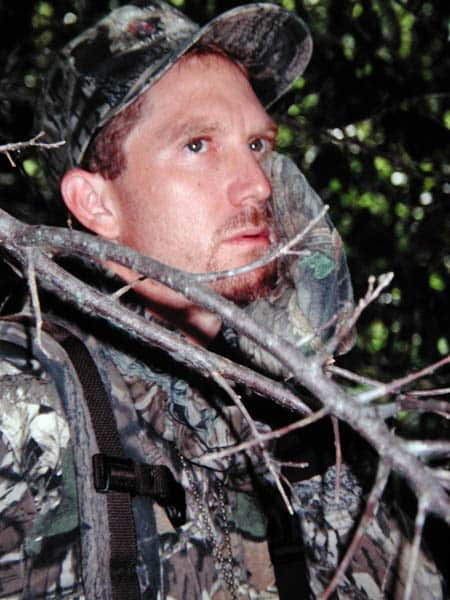Competitive Turkey Calling for Tough Turkeys with Chris Parrish
OutdoorHub Reporters 04.20.12

Chris Parrish of Centralia, Missouri, is a quiet, gentle fellow who doesn’t stand out in a crowd. But when he walks out on the stage of a turkey calling contest, he rules the roost. Parrish has won eight World Turkey Calling Championships and a number of other turkey calling contests. When Parrish walks in the door of a turkey calling contest, other callers will just drop their heads, because they know that they’re in the presence of one of the world’s turkey calling masters.
Question: Chris, what do you have to do to win a World Turkey Calling Contest?
Parrish: The most difficult ingredient required to win a World Turkey Calling Championship is finding the time needed to practice calling enough to be able to win. The second challenge is to realize that you’re going up against some of the greatest turkey callers the world ever has seen. Because they’re all good, any one of the top echelon callers can win on any given day.
Question: What do you think you do better than anybody else in a turkey calling contest?
Parrish: I’m a consistent caller. I always call clean and call the same every time I compete.
Question: What’s the difference between calling judges and calling turkeys?
Parrish: In a turkey calling contest, you have to be mistake-free, because a judge will count off for the least little mistake you make. But when you’re calling turkeys in the woods, making a mistake is no big deal. Rarely will you ever hear a hen in the woods call flawlessly. Hens don’t call perfectly, and turkey gobblers are much more forgiving than turkey calling judges. So, even if you can’t call perfectly, you still can call turkeys in the woods. Just listen to the turkeys out in the woods and try to imitate the rhythm and the cadence that they use when they call.
 Question: What call do you recommend a beginning turkey hunter use?
Question: What call do you recommend a beginning turkey hunter use?
Parrish: A first-time turkey caller needs to start with a simple call, like a push-pull or a box call. The sound is built into those types of call, so all the hunter has to do is learn the right rhythm, and he can call in a turkey. Once someone learns the rhythm of the call, I suggest he or she switch to a pot-type call (a slate or a glass friction call). When this person’s ready to start using a mouth call, I recommend starting with a straight double reed call, because that type of call will allow them to soft-talk to a gobbler when the turkey becomes accustomed to the hunter.
Question: What’s the hardest turkey for you to take?
Parrish: All turkeys at some time give me a problem. But if I have to pick one turkey that’s tough for me, it’s the Osceola gobbler. Finding a place to hunt that turkey can be more difficult than actually hunting the bird. When you have limited places and numbers of turkeys you can hunt, you can’t make a mistake and still take a tom. So, the Osceola is the toughest for me.
Question: How do you hunt the Osceola turkey?
Parrish: If you’re hunting a small tract of land, and there are very few turkeys to hunt, don’t call a lot, and don’t be aggressive. If you move around a lot, more than likely you’ll spook the gobbler you’re trying to call. If you don’t spook a gobbler today, you can hunt him again tomorrow. If you do spook him today, you may not be able to find him tomorrow. When I’m hunting the Osceola gobbler, I try to be extremely stealthy, sound like a turkey and stay far enough away from the turkeys that if I can’t call them in, I won’t run them off.
Question: What calls do you use other than the calls you buy in the store?
Parrish: I scratch in the leaves to sound like a turkey scratching in the leaves, looking for something to eat. I hit my hat against my leg to sound like a gobbler stretching his wings or flying down off the roost. Many times I’ll carry the tail feathers (a turkey fan) of a gobbler into the woods with me in the back of my hunting coat. You’ll be surprised at the type of response you’ll get from another gobbler when you flash a turkey fan at him. If you’ll be using this tactic, be careful, especially if you’re hunting on public land. If that turkey will come to a strutting gobbler decoy, he’ll come to that fan when he sees it. I try to break-up my profile when I use this tactic. That old gobbler will think there’s another gobbler strutting and will come running to you.
This article is part three of a series on how expert hunters take experienced turkeys. To read Harold Knight’s interview, click here. Click here to read my interview with veteran and expert turkey hunter Al Mattox.

